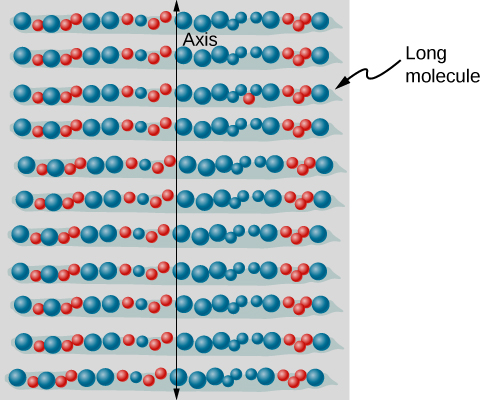| << Chapter < Page | Chapter >> Page > |
Since the part of the light that is not reflected is refracted, the amount of polarization depends on the indices of refraction of the media involved. It can be shown that reflected light is completely polarized at an angle of reflection given by
where is the medium in which the incident and reflected light travel and is the index of refraction of the medium that forms the interface that reflects the light. This equation is known as Brewster’s law and is known as Brewster’s angle , named after the nineteenth-century Scottish physicist who discovered them.
This Open Source Physics animation shows incident, reflected, and refracted light as rays and EM waves. Try rotating the animation for 3D visualization and also change the angle of incidence. Near Brewster’s angle, the reflected light becomes highly polarized.
Check Your Understanding What happens at Brewster’s angle if the original incident light is already vertically polarized?
There will be only refraction but no reflection.
Polarizing filters have a polarization axis that acts as a slit. This slit passes EM waves (often visible light) that have an electric field parallel to the axis. This is accomplished with long molecules aligned perpendicular to the axis, as shown in [link] .

[link] illustrates how the component of the electric field parallel to the long molecules is absorbed. An EM wave is composed of oscillating electric and magnetic fields. The electric field is strong compared with the magnetic field and is more effective in exerting force on charges in the molecules. The most affected charged particles are the electrons, since electron masses are small. If an electron is forced to oscillate, it can absorb energy from the EM wave. This reduces the field in the wave and, hence, reduces its intensity. In long molecules, electrons can more easily oscillate parallel to the molecule than in the perpendicular direction. The electrons are bound to the molecule and are more restricted in their movement perpendicular to the molecule. Thus, the electrons can absorb EM waves that have a component of their electric field parallel to the molecule. The electrons are much less responsive to electric fields perpendicular to the molecule and allow these fields to pass. Thus, the axis of the polarizing filter is perpendicular to the length of the molecule.

Notification Switch
Would you like to follow the 'University physics volume 3' conversation and receive update notifications?